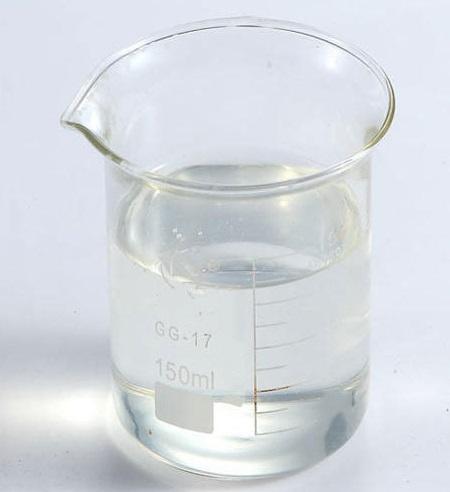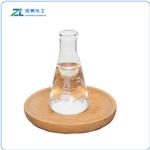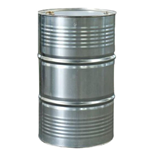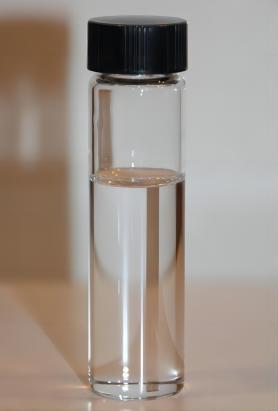The application of ethylene glycol
Introduction
Ethylene glycol is also known as "ethylene glycol", "1,2-ethylene glycol", or EG for short. The chemical formula is (CH2OH)2, and it is the simplest diol[1]. Ethylene glycol is a colorless, odorless, sweet-smelling liquid that is toxic to animals, with a human lethal dose of about 1.6 g/kg. Ethylene glycol is miscible with water and acetone, but less soluble in ethers. Used as solvent, antifreeze and raw material for synthetic polyester. Polyethylene glycol (PEG), a high polymer of ethylene glycol(picture 1), is a phase-transfer catalyst also used in cell fusion; its nitrate ester is an explosive.

Picture 1 The physical drawing of PEG
Properties
Due to its low molecular weight and lively properties, ethylene glycol can perform reactions such as esterification, etherification, alcoholization, oxidation, acetalization, and dehydration[2]. Ethylene glycol is similar to ethanol and can mainly react with inorganic or organic acids to form esters. Generally, only one hydroxyl group reacts first. After increasing the temperature and increasing the amount of acid, both hydroxyl groups can form esters. When reacted with nitric acid mixed with sulfuric acid, dinitrates are formed. The acid chloride or acid anhydride readily esterifies the two hydroxyl groups. When ethylene glycol is heated under the action of a catalyst (manganese dioxide, alumina, zinc oxide or sulfuric acid), intramolecular or intermolecular water loss can occur. Ethylene glycol can react with alkali metals or alkaline earth metals to form alkoxides.
Mainly used to make polyester, polyester, polyester resin, hygroscopic agent, plasticizer, surfactant, synthetic fiber, cosmetics and explosives, and used as a solvent for dyes, inks, etc., antifreeze for preparing engines, and gas dehydrating agent , manufacture resin, can also be used as wetting agent for cellophane, fiber, leather, adhesive. It can produce synthetic resin PET, fiber grade PET is polyester fiber, and bottle flake grade PET is used to make mineral water bottles, etc. It can also produce alkyd resin, glyoxal, etc., and is also used as antifreeze. In addition to being used as an antifreeze for automobiles, it is also used for the transportation of industrial cooling capacity, generally called a refrigerant, and can also be used as a condensing agent like water.
Ethylene glycol methyl ether series products are high-grade organic solvents with excellent performance, used as solvents and diluents for printing inks, industrial cleaning agents, coatings (nitrocellulose paint, varnish, enamel), copper clad laminates, printing and dyeing, etc.; they can be used for production Raw materials for chemical products such as pesticide intermediates, pharmaceutical intermediates and synthetic brake fluids; as electrolytes for electrolytic capacitors, leather-making chemical fiber dyes, etc. Used as textile auxiliaries, synthetic liquid dyes, and raw materials for desulfurizers in fertilizer and oil refining production.
Precautions
1. Its freezing point changes with the concentration of ethylene glycol in the aqueous solution. When the concentration is below 60%, the concentration of ethylene glycol in the aqueous solution increases and the freezing point decreases, but when the concentration exceeds 60%, as the concentration of ethylene glycol increases. As the concentration increases, the freezing point tends to rise, and the viscosity also increases with the increase of the concentration. When the concentration reaches 99.9%, its freezing point rises to -13.2°C, which is an important reason why concentrated antifreeze (antifreeze mother liquor) cannot be used directly, and users must pay attention.
2. Ethylene glycol contains hydroxyl groups. If it works at 80°C to 90°C for a long time, ethylene glycol will first be oxidized to glycolic acid, and then oxidized to oxalic acid, namely oxalic acid (oxalic acid), which contains 2 carboxyl groups. Oxalic acid and its by-products affect the central nervous system first, then the heart, and then the kidneys. Glycol oxalic acid, which causes corrosion and leakage of equipment. Therefore, in the prepared antifreeze, there must also be preservatives to prevent corrosion of steel and aluminum and the formation of scale.
Reference
1 Journal of Toxicology, Clinical Toxicology. (Marcel Dekker, 270 Madison Ave., New York, NY 10016) V.19- 1982- : 38,445,2000
2 Sudebno-Meditsinskaya Ekspertiza. Forensic Medical Examination. (V/O Mezhdunarodnaya Kniga, 113095 Moscow, USSR) V.1- 1958- : 26(2),48,1983
);Related articles And Qustion
See also
Lastest Price from Ethylene glycol manufacturers

US $30.00/kg2024-04-27
- CAS:
- 107-21-1
- Min. Order:
- 1kg
- Purity:
- 99%
- Supply Ability:
- 5000kg/week

US $20.00-15.00/kg2024-04-26
- CAS:
- 107-21-1
- Min. Order:
- 1000kg
- Purity:
- 99%
- Supply Ability:
- 5000kg/week



